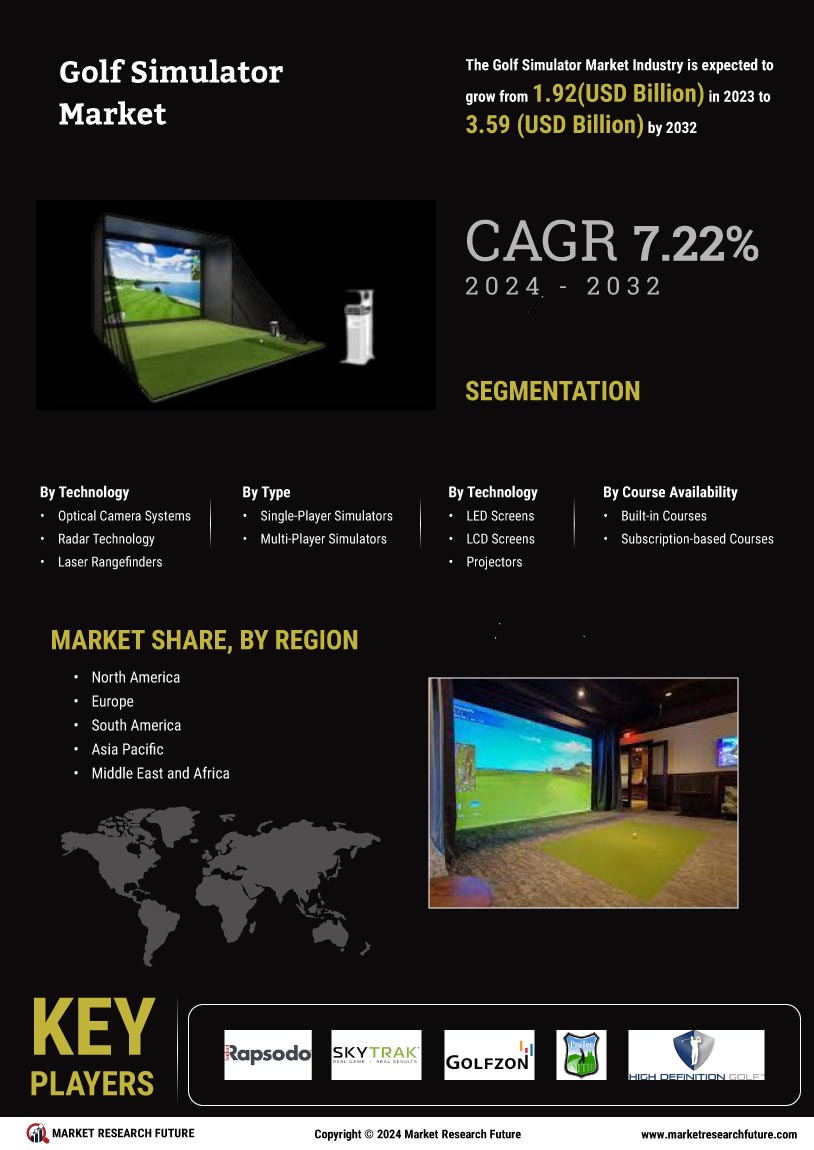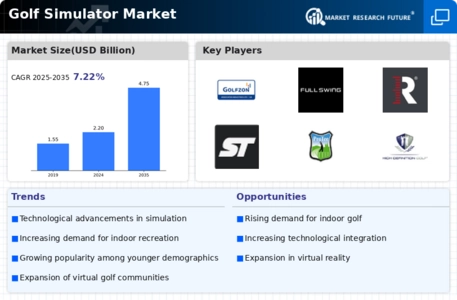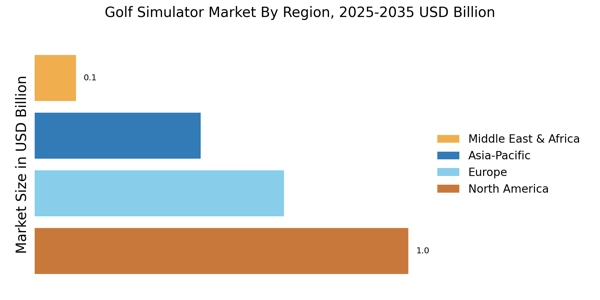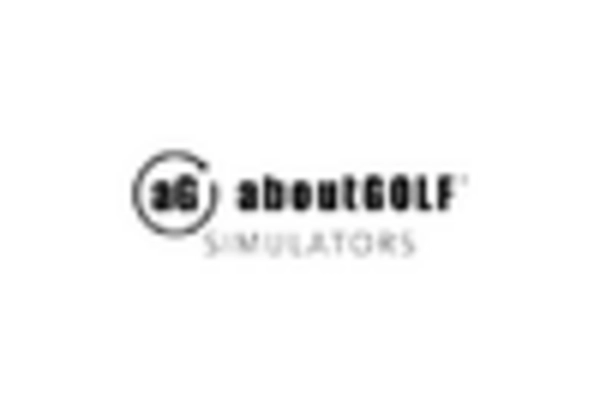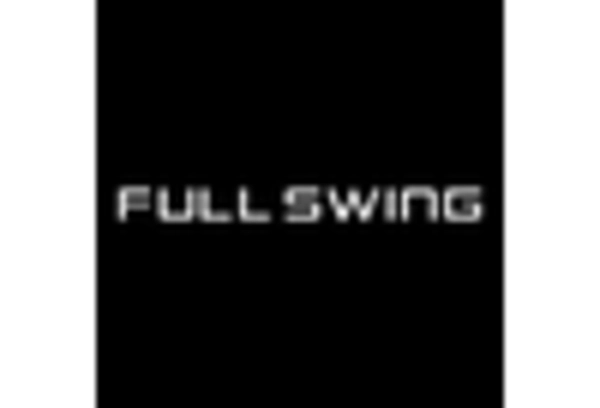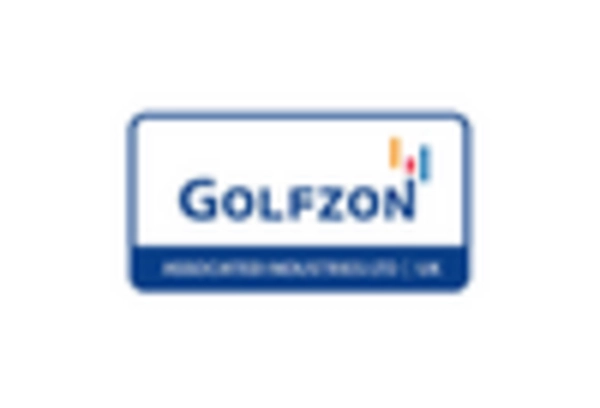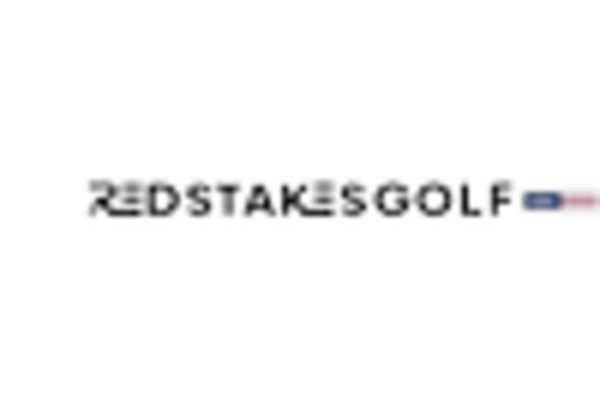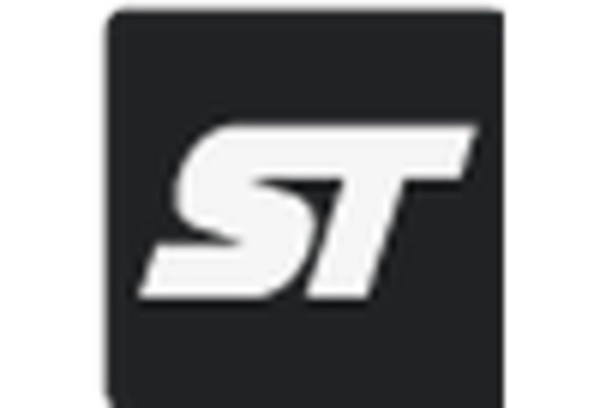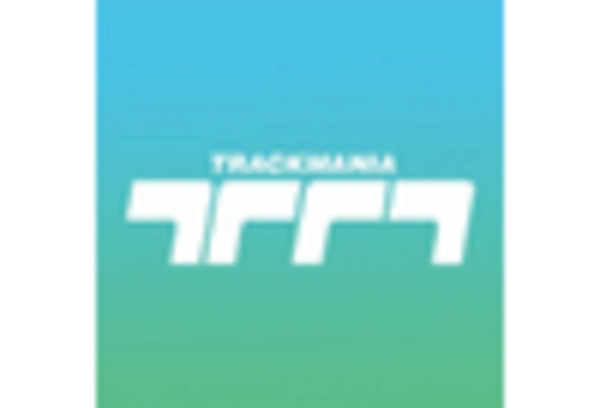Increased Participation in Golf Simulator Market
The Golf Simulator Market is witnessing a notable increase in participation rates, particularly among younger demographics. This trend is attributed to the accessibility and convenience that simulators offer, allowing individuals to practice and play golf regardless of weather conditions or geographical limitations. Recent statistics indicate that participation in golf-related activities has risen by over 20% in the last few years, with simulators playing a crucial role in attracting new players. The ability to engage in golf simulation at home or in dedicated facilities is appealing to a broader audience, thereby expanding the market. As more individuals seek to engage with the sport, the Golf Simulator Market is poised for continued growth, potentially leading to increased sales and innovation.
Technological Advancements in Golf Simulator Market
The Golf Simulator Market is experiencing a surge in technological advancements that enhance user experience and performance analysis. Innovations such as high-definition graphics, real-time data analytics, and virtual reality integration are becoming increasingly prevalent. These technologies allow players to simulate real-life golfing conditions, providing a more immersive experience. According to recent data, the market for golf simulators is projected to grow at a compound annual growth rate of approximately 15% over the next five years. This growth is driven by the increasing demand for high-quality simulation experiences among both amateur and professional golfers. As technology continues to evolve, the Golf Simulator Market is likely to see further enhancements that could redefine how the game is played and practiced.
Integration of Social Features in Golf Simulator Market
The Golf Simulator Market is increasingly integrating social features that enhance user engagement and community building. Many modern simulators now offer multiplayer options, allowing friends and family to compete or practice together, regardless of their physical location. This social connectivity is vital in attracting a younger audience who values shared experiences. Recent trends show that simulators with integrated social features see higher usage rates, as users are more likely to engage with the technology when it includes a social component. The Golf Simulator Market is likely to continue evolving in this direction, as manufacturers recognize the importance of fostering a sense of community among users, which could lead to increased sales and brand loyalty.
Rise of Indoor Golf Facilities in Golf Simulator Market
The Golf Simulator Market is experiencing a rise in the establishment of indoor golf facilities, which cater to both recreational and competitive players. These facilities often feature multiple simulators, allowing users to play various courses and engage in practice sessions year-round. The trend towards indoor golfing is particularly appealing in urban areas where outdoor space is limited. Recent data indicates that the number of indoor golf facilities has increased by approximately 25% in the last three years, reflecting a growing interest in accessible golfing options. This expansion not only boosts the Golf Simulator Market but also fosters a community of golf enthusiasts who can share their passion for the sport in a controlled environment.
Health and Fitness Trends Impacting Golf Simulator Market
The Golf Simulator Market is increasingly influenced by the growing health and fitness trends observed in society. As more individuals prioritize physical activity and wellness, golf simulators provide an excellent avenue for exercise while enjoying the sport. Engaging in golf simulation can improve physical fitness, coordination, and mental well-being. Recent surveys suggest that nearly 30% of golf simulator users report enhanced fitness levels as a result of regular practice. This trend aligns with the broader movement towards integrating sports into fitness regimens, thereby driving demand for golf simulators. The Golf Simulator Market stands to benefit from this health-conscious shift, as more consumers seek ways to incorporate enjoyable physical activities into their lifestyles.
